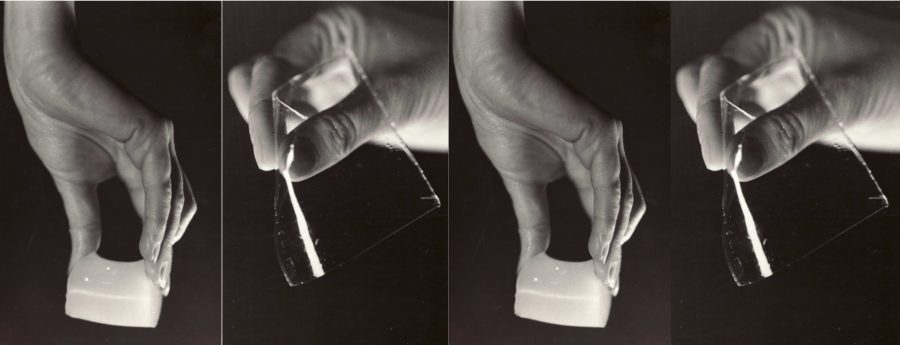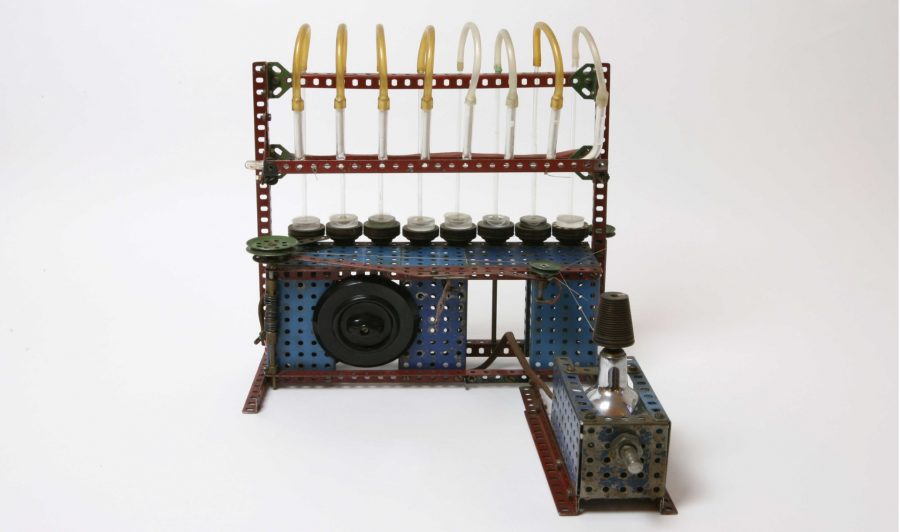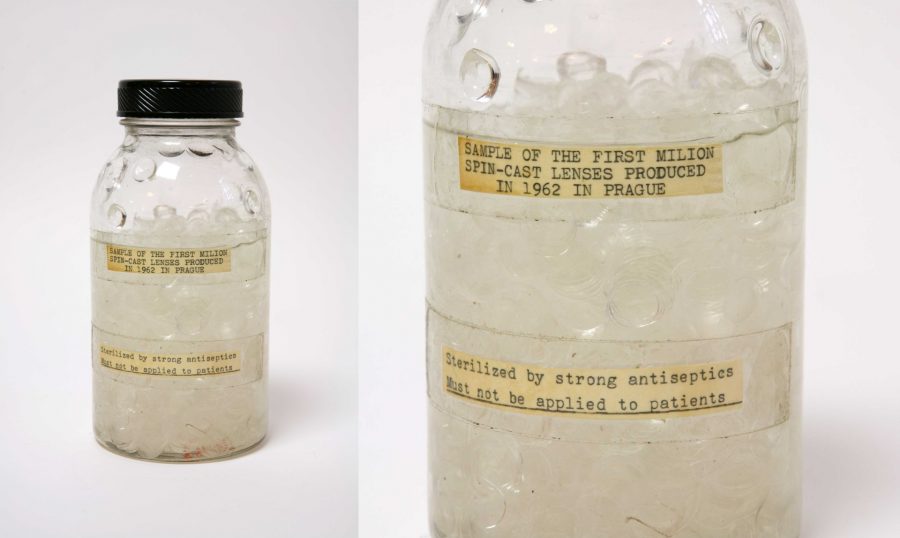OTTO WICHTERLE

“Lensmachine” – a piece of equipment for simple contact lens manufacturing.
Professor Otto Wichterle (1913 – 1998) ranks among outstanding Czech scientists who have been recognized at home and abroad.
His specialization was the field of organic and macromolecular chemistry.

Otto Wichterle dealt with the synthesis of hydrophilic gels to find the right material for eye implants. Together with chemist Drahoslav Lím, they prepared a transparent hydrogel poly (2-hydroxyethyl methacrylate). From this hydrogel, Wichterle managed to produce soft contact lenses, which had a number of advantages over the then used hard contact lenses.

Hydrogel poly (2-hydroxyethyl methacrylate); Academy of Sciences (MÚA)
Hydrogels and contact lenses
Worldwide recognition was brought to Wichterle by hydrogels – polymers, from which soft contact lenses could be made. Hydrogels are three-dimensional crosslinked polymers capable of receiving water up to a certain equilibrium degree. Their characteristics make them similar to living tissue and therefore are suitable for a variety of medical applications. They retain flexibility and strength in the swollen state.

LENSMACHINE

Prototype of the lensmachine in the National Technical Museum collection; NTM, photo by Kateřina Uksová

During the Christmas of 1961, he built a lens-making machine, which he called “Lensmachine” with his son’s Merkur kit (Meccano). The device was powered by a bicycle dynamo, connected to a doorbell transformer. From the monomer mixture, in the rotating forms, a liquid meniscus – a shape of a future lens – was formed, which was then fixed by polymerization to the resulting product with very thin edges. Today, production of contact lenses is a huge industry and contact lenses have become a common consumer item for millions of people.


Bottle with part of the first million lenses cast in 1962, found in NTM collections; NTM, photo by Kateřina Uksová

“Wichterle’s invention of the soft contact lens was revolutionary. Even experienced specialists were unable to detect such a lens at first glance. Experts of the times were often bewildered by the dramatic presentation of its features, which the professor gladly and often performed (as a matter of fact, the American licensing partners were also amazed by this performance). Wichterle usually removed the lens from his eye, tossed it to the ground, trampled it with his soles, collected it from the ground, cleaned it mechanically and cleaned it in his mouth and then put it undamaged back into his eye. Contemporary contact lenses have equally fascinating features, although it cannot be recommended to test them this way. However, their production has advanced greatly since the times of “Lensmachine.”

